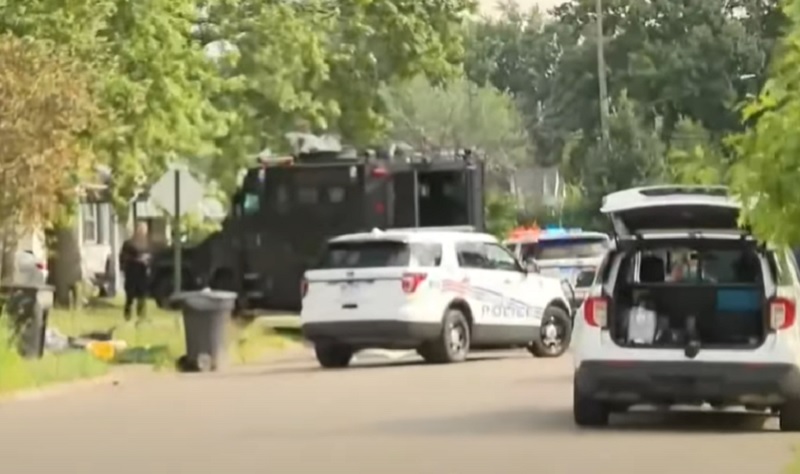
In San Jose, California police shot a man armed with a machete who had barricaded himself in a home with others including 2 children. In Oklahoma City police responded to a barricaded murder suspect but were able to take the person into custody after breaching the door. Once inside, police discovered a body inside the residence. A North Little Rock, Arkansas police responded to a disturbance involving a weapon. On arrival they found an injured party and that the suspect had barricaded himself inside the residence. He was arrested several hours later.
Deputies with the Gallatin County, Montana Sheriff’s Department responded to a report of a man threatening people with a gun and a report of gunshots. The officers arrived at a mobile home park to look for the suspect, they heard a challenge from inside a mobile home telling officers to leave the area. Deputies report seeing a man holding what appeared to be a gun in the window of the home, then saw a laser light such as those used in sights for guns aimed at them. The suspect eventually agreed to meet with the officers but had to make dinner first.
A suspect in Valinda, CA was found dead by suicide after firing more than 100 rounds at deputies. Neighbors had to be evacuated during the standoff which involved police negotiators, mental health workers, and SWAT officers. Tactical vehicles were deployed to shield neighboring houses from gunfire. The operation lasted from Friday to Sunday.
Those are just a few of the examples retrieved from an internet search of “barricaded suspect” within the last month. Like a grown-up version of tag, those sought by police often retreat to a home base where they feel safe. Some think that the Constitutional right to be free from government intrusion into their homes means that police cannot touch them once they secrete themselves behind the walls of a residence. Most of the time, they are correct.
In 1604 Sir Edward Coke made the famous statement “the house of every one is to him as his Castle and Fortress as well for defence against injury and violence, as for his repose” which has been shortened to “a man’s home is his castle” and articulated the Castle Doctrine which affirmed the right of privacy and protection in one’s home.
Police operations must give due consideration to the principal even in tense situations like a barricaded suspect. In general, police may enter a residence without a search warrant if a person who resides there is the subject of an arrest warrant and is known to be present, or if there are emergency circumstances such as where entry must occur or lives might be lost.
Besides persons who are wanted or who have fled into their homes after committing crimes, the police are often called to do a “welfare check” on persons who relatives or friends are concerned about. These are voluntary contacts that often result in finding that the person of concern is fine, but also can result in finding a person deceased, injured or ill, or mentally unstable. In one study of the use of deadly force involving a mentally ill person conducted in a major city, it was found that 95% of the shootings occurred on the person’s own property or home territory. Knocking on a door can be deadly.
Whenever possible, even after an emergency entry, law enforcement should seek a warrant. For example if on the property because of a fire, they cannot remain on the property indefinitely without a warrant once the emergency circumstances are over. Suicidal barricaded persons where no one else’s life is at risk pose a special concern. The natural inclination of police officers, who value life and have a sense of community caretaking, is to stop the person from harming themselves. There have been successful lawsuits and even criminal charges against police officers who, in their attempt to intervene with a suicidal or mentally ill person, entered their home and injured or killed the subject when they resisted being taken into protective custody.
If the person has committed no other crime, is not in possession of weapons unlawfully, and is no immediate risk to others, police must decide to disengage until a lawful condition is met to make entry into the home or take the person into custody. While there are more instances of law enforcement partnering with mental health or social work co-responders, these personnel are also limited in what they can do to intervene.
Negotiation is a preferred method of dealing with a barricaded person, but that method depends entirely on the barricaded person’s willingness and ability to talk. When others may be inside the walls of the barricaded person, every second that ticks by can lead to success or deadly consequences. Police officers face the danger of attacks both physical and legal when making the complex decision to force entry into a man’s castle.